Last updated: July 5, 2023
Article
The Klamath Kaleidoscope: Fall-Winter 2021
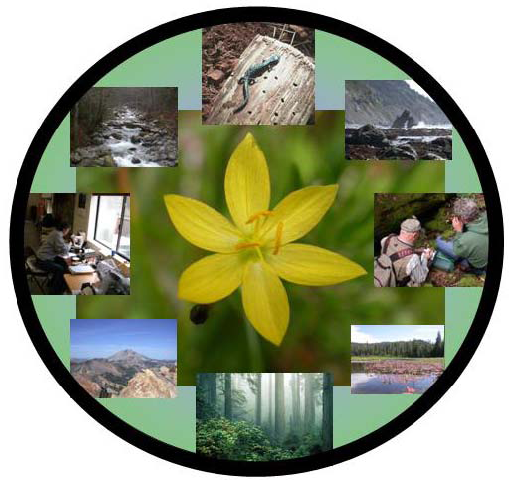
In this issue of the Klamath Kaleidoscope, we share news of the newly published geologic type section inventory of Klamath Network parks, the latest results from white-nose syndrome monitoring in bats, our new data workflow system, updates from 2021 vital signs monitoring, and recent publications. We also highlight news about Klamath Network people, including Addis Gonzalez, Sean Mohren, Sonya Daw, Jennifer Chenoweth, and Elizabeth Raynal.
PROJECT NEWS
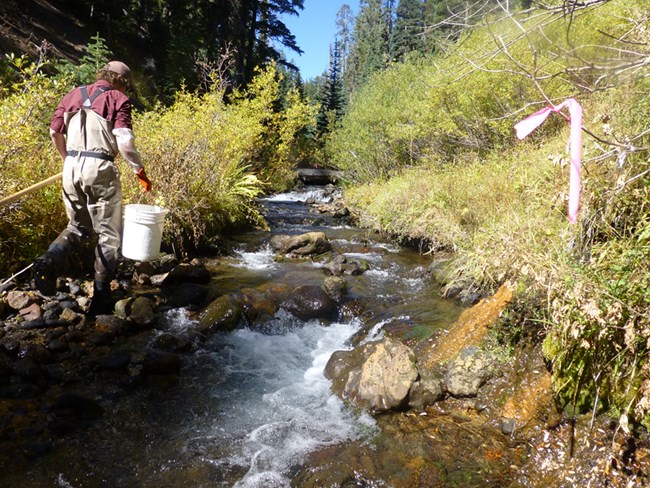
NPS
What's in the Water?
With a little more wiggle room in the budget due to the pandemic stand-down in 2020, the Klamath Network is temporarily expanding its water chemistry analysis of park streams. The Klamath Network is funding a two-year inventory of heavy metals and insecticides in stream water. Water samples will be collected as part of the Klamath Network’s Stream Water Quality and Aquatic Communities monitoring program. They’ll be analyzed in the lab for heavy metals such as arsenic, barium, copper, iron, and lead, along with the regular suite of water quality characteristics, such as nutrients and salts.
Heavy metals
Acidic water increases the solubility of heavy metals. If levels are high enough, these heavy metals, like copper and lead can be harmful to life. Heavy metals can occur naturally in pockets of the landscape, but they can also concentrate in residue from hard rock mining. With some evidence of potential iron in Crater Lake NP’s springs, as well as a history of mining above some of Whiskeytown NRA’s streams, park managers are interested in finding out if and where heavy metals may occur at detectable or concerning levels in their parks.
Insecticides
Carbamate insecticides are a form of pesticide used globally on crops. They are highly toxic to humans and animals. Carbamate insecticides are soluble in water and thus detectable by our lab analysis methods. One form of this class of carbamate insecticides—carbofuran—is illegal in the United States, but is often found in and near illegal marijuana grows. While parks are interested in testing for insecticides in general because of their potential harm to stream life, they are also interested in the presence of insecticides as a possible indicator of rodenticides at illegal marijuana grows.
Anticoagulant rodenticides have received a lot of attention lately because they can inadvertently harm and kill nontarget wildlife. Basically, animals that eat rodents, like fishers, martens, or other mesocarnivores, as well as raptors, can be poisoned by ingesting rodenticide in the body of their prey, or even ingesting the rodent bait directly. For parks, this is a particularly pernicious problem at illegal marijuana grow sites, where rodenticide is commonly used. It’s hard to test for the rodenticides, directly, though, because the anticoagulants are not water soluble.
Adding carbamate insecticide testing to our lab analyses thus addresses two potential concerns. Parks can identify not only harmful pesticide residue in their streams, but also identify areas that may also be contaminated with rodenticides, by association.
Year 1 water samples shipped off for testing
The first stream water samples from Crater Lake NP and Whiskeytown NRA were shipped off to our partner, the UC Davis Animal Health and Food Safety Lab, for analysis this fall. Carbamate insecticides analyses are still pending, but preliminary results for heavy metals indicate that many metals in areas of Whiskeytown NRA with historical acid mine drainage are below detection limits (a good thing!), with the exception of barium and iron. We have also confirmed the high levels of iron suspected at some springs in Crater Lake NP.
Next year, stream water from Redwood NSP, Lassen Volcanic NP, and Oregon Caves NM&P will be sampled for this expanded set of water chemistry analytes.
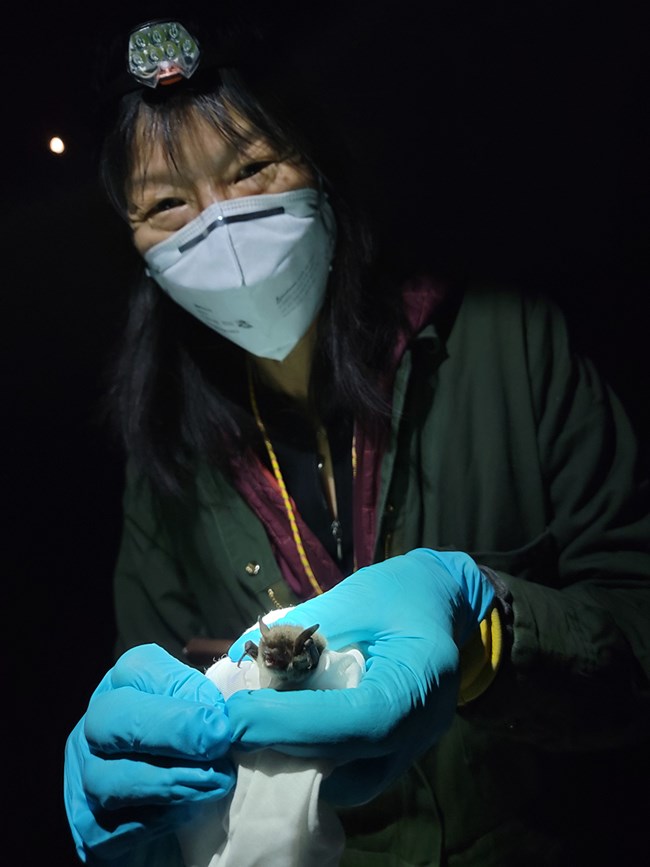
NPS/Christy Walker
Evidence Grows for the Spread of White-Nose Syndrome in Western States
As surveillance for white-nose syndrome in bats continues, evidence for the spread of the disease in Western states grows stronger. In northern and southern California, samples collected by NPS-led bat crews show “inconclusive” detections of the fungus that causes white-nose syndrome, Pseudogymnoascus destructans (Pd). While “inconclusive” detections are not a sure confirmation, they are often followed by later confirmation of the disease. The presence of Pd is now suspected in seven different bat species across five counties across California and northwestern Arizona, based on spring surveillance results.
With NPS Emerging Diseases funding, NPS network program managers, Alice Chung-MacCoubrey (Klamath Network) and Allen Calvert (Mojave Desert Network), have been leading surveillance surveys in California and Arizona. Chung-MacCoubrey’s work resulted in the first “inconclusive” detection of Pd in California (2018), as well as an increasing number of subsequent inconclusive detections in 2019 and 2021 at various sites in northern California. Calvert’s work resulted in the first “inconclusive” results in southern California this year. This was surprising, given the absence of any other known positive results from nearby areas, but it may mean the fungus has arrived in the state's southern region. View this press release for more details.
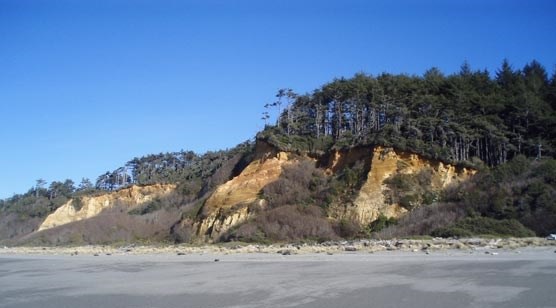
NPS
Newly Published Geologic Type Section Inventory for the Klamath Network
A compilation of geologic type sections that occur in parks of the Klamath Network has just been published: National Park Service Geologic Type Section Inventory: Klamath Inventory & Monitoring Network. The study was funded by the NPS Geologic Resources Division as part of its larger Geologic Resource Inventory (GRI) program. The GRI is designed to compile baseline geologic resource information about parks. This new inventory of type sections fills a gap in basic geologic information that has not previously been compiled for most parks. Park managers can use this baseline information to better understand, identify, and protect important geologic resources. It can also be used for public education.
First, some definitions are in order. A type section is one form of a stratotype. A stratotype is an important designation for a newly proposed geologic unit that serves as a standard exposure region displaying the characteristic features that define the unit. Stratotypes are subdivided into type areas, type localities, type sections, principal reference sections, and reference sections based on the geographic extent of the exposures. Type areas tend to represent larger geographic areas that encompass type localities, which in turn contain type sections.
Type sections are important both historically and scientifically. They represent a specific and well-exposed section of a mappable geologic unit, such as a formation. They serve as a standard for defining and recognizing geologic units because they present a relatively complete and representative profile. Documenting type sections is like creating a library of information about Earth’s ~4.5 billion years of history. This “library” can be used to better understand the forces and evolving life forms that have occurred over time on the planet. Type sections can also serve as teaching sites for students. For these reasons, they should be protected and conserved for researchers to study and evaluate in the future.
For each Klamath Network park, the inventory provides an overview of the park’s geology, a geologic map, a description of any type sections that occur in the park, and suggestions for new type sections, if applicable. No stratotypes are currently designated within the boundaries of Lassen Volcanic NP, Lava Beds NM, Oregon Caves NM&P, or Whiskeytown NRA. Crater Lake NP has two type sections, and Redwood NSP has one type locality. Based on results of the inventory, the report recommends designating new stratotypes for geologically unique units at Lassen Volcanic NP, Lava Beds NM, and Crater Lake NP. To gather this information, the inventory involved intensive data mining of existing online or published articles and maps—no field work—and included any stratotype within 48 km (30 mi) of park boundaries.
If you’re curious how geologists wrap their heads around time, flip to the back page for a handy map of Earth’s geologic time scale.
Data Workflow Gets a Boost
ArcPad is OUT and Field Maps is IN.
That is good news, because it means that data flow more efficiently from the hands of a network field technician to a park manager. It is especially good news for invasive plant monitoring. The new software enables field data entered into a digital tablet to synch instantly with an ArcGIS Online project when within Wi-Fi range. Before this, data from a GPS unit had to be downloaded manually using a cable to a computer. The data manager then emailed data to a park manager in the form of a shapefile or formatted it into a spreadsheet. Lastly, a park manager entered the data into hardware and/or software to view the location of an infestation. The intermediate steps simply meant a slower workflow. Now, when network crews detect an infestation of invasive weeds, the location is immediately available to park managers in an existing web map, as soon as it is synched with the ArcGIS Online project. Jen Hooke, botanist with Crater Lake National Park, is excited about the change,
“This new data management system tips the scales in our favor – those bad plants don’t stand a chance. We can swiftly dispatch weed warriors to their location and eradicate them.”
Advances in technology and changing software requirements converged to move NPS staff in this direction. The Field Maps app can be downloaded onto most mobile devices, and this new system has been adopted across the service.
Future applications of this new technology may include developing tailor-made ArcGIS Online dashboards, as well as potentially collaborating with the region’s NPS Invasive Plant Management Team ArcGIS Online projects to combine or share data. Both could serve park manager needs more efficiently.

NPS
2021 Vital Sign Monitoring Updates

To find out which Klamath Network scientist leads each monitoring program, visit the Contact Us page for the Klamath Network.
Redwood National and State Parks
rocky intertidal zone
- Fourth year of biodiversity protocol; 17th year of targeted species monitoring.
landbird point counts
- Completed fifth visit since 2008; most frequently observed species were Pacific slope flycatcher and Pacific wren.
invasive plant surveys
- Completed all prioritized segments and shared geospatial data for invasive species locations with park.
terrestrial vegetation monitoring
- Completed all 26 matrix sites and 19 of 20 riparian sites.
Whiskeytown National Recreation Area
streams monitoring
- Twenty-one sites monitored, with crews housed at Lassen Volcanic NP and commuting daily to Whiskeytown NRA.
invasive plant surveys
- Completed all prioritized segments and shared geospatial data for invasive species locations with park.
Lassen Volcanic National Park
streams monitoring
- Two sites were sampled prior to the Dixie Fire and the remainder were postponed until 2022.
whitebark pine monitoring
- Only 1 site sampled at Lassen Volcanic NP due to Dixie Fire.
invasive plant surveys
- Cancelled due to the Dixie Fire.
Oregon Caves National Monument and Preserve
landbird mist netting
- Preliminary data show 341 birds of 33 species captured (including recaptures). Notable captures included a single hatch year green tailed towhee, an after-second-year lazuli bunting, and a couple of Townsend's x hermit warbler hybrids. Crew started and ended the season with snow on the ground!
cave monitoring
- All sites sampled; the bat count this year was the second highest recorded, continuing an upward trend.
invasive plant surveys
- Completed all prioritized segments and shared geospatial data for invasive species locations with park.
Lava Beds National Monument
In addition to conducting the annual monitoring, staff replaced fire-damaged equipment and completed sampling missed in 2020 due to COVID-related challenges.
landbird point counts
- Completed fifth visit since 2008; 65 species detected. Western meadowlark was most frequent.
invasive plant surveys
- Completed all prioritized segments and shared geospatial data for invasive species locations with park.
terrestrial vegetation monitoring
- Completed all 30 sites at Lava Beds NM.
Crater Lake National Park
streams monitoring
- Twenty-four sites sampled after crew relocated to Crater Lake NP due to the Dixie Fire in Lassen Volcanic NP.
invasive plant surveys
- Completed all prioritized segments and shared geospatial data for invasive species locations with park.
whitebark pine monitoring
- All 10 sites sampled.
PEOPLE NEWS

NPS
Addis Gonzalez – Scientists in Parks Intern
It’s amazing what you find on an old-growth forest floor when you’re down on your knees digging through it. That’s exactly how Addis Gonzalez spent her summer as a Scientists in Parks intern with the Klamath Network.
Gonzalez joined the terrestrial vegetation monitoring crew from July through September of 2021 at Redwood National and State Parks. One of her tasks was to measure litter and duff depth at each plot. In the redwood forest, she kept coming across a white web-like material (fungal hyphae) interspersed in the soil. She wondered if this was the same fungi she had heard about from Oregon, reputed to be one of the largest living organisms on the planet. What Addis was seeing was not the Humongous Fungus from Malheur National Forest, but it triggered wonder about fungi. She was fascinated by the endless variety of mushrooms she’d discover hiding in dark, moist corners of the understory. Standing under towering redwoods on a forest floor rich with fungi, she also began to wonder about the relationship between old growth forests and fungi.
“Coming in so many shapes and sizes, you can’t help but be intrigued by the fungi you come across in the redwood forest. Before this experience, I was only exposed to the few varieties of mushrooms we find in the grocery store. I’m so thankful for this eye-opening experience. I’m even more thankful that I got to share it with such a knowledgeable and caring team of coworkers.”
The internship has shifted Gonzalez’s career interests in a slightly different direction from her study of geology in college. Gonzalez’s reignited passion for biology, and specifically, fungi, inspired her to learn more through a fungi class she’s currently taking with Backcountry Press. And her experience with the internship helped open the door for her current position with the Bay Foundation in southern California. As a field technician with the foundation, she’ll work on a variety of biology related projects, such as removing invasive plants and planting native plants, as well as helping to coordinate volunteer events.
Gonzalez reflects on her Scientists in Parks internship,
“I truly believe there is so much to gain when we look at things through an interdisciplinary perspective. My time in the forest reminded me of that. I used to spend my time outdoors focusing on the geomorphic forces that led to its present day view. I would skim past the greenery to focus on the rocks. Now I look around and appreciate the outdoors so much more. The interconnectedness of so many completely different things is really mystifying and inspiring. I can’t wait to learn more about the individual stories hiding in plain sight and to share their importance with others!”
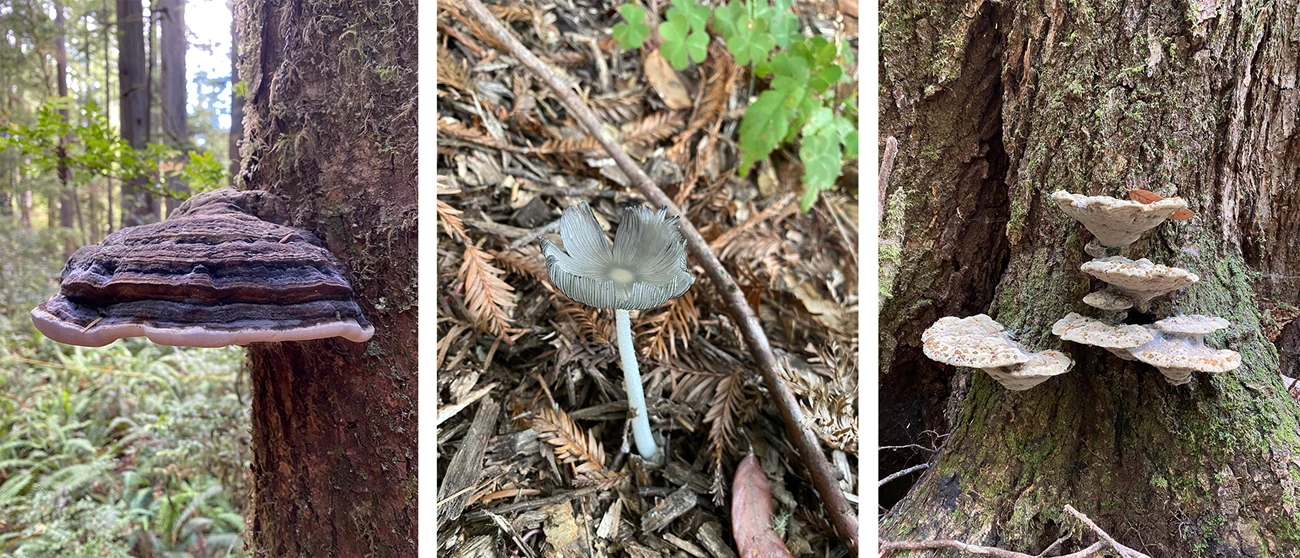
NPS/Gonzalez
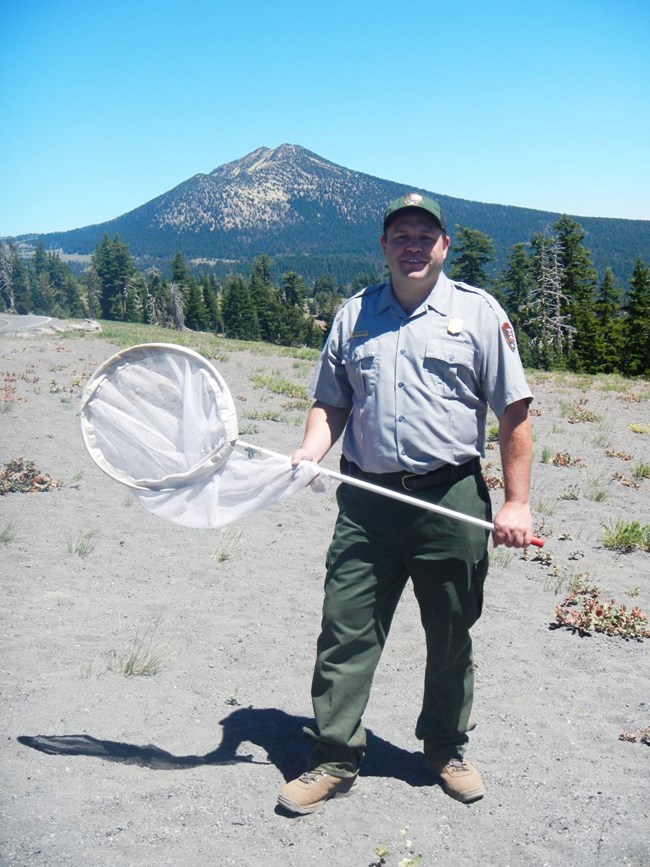
NPS
Sean Mohren Wins the Region’s 2021 Natural Resource Research Award
In case you missed it, Sean Mohren was selected for the Natural Resource Research award for Regions 8, 9, 10, 12 in July 2021.
Mohren was commended for his work ethic, the high standards he holds for himself and his staff for data quality, his many research and monitoring collaborations, as well as his involvement in an impressive assortment of wildlife projects. Among the many animals benefitting from Sean’s work are bumblebees, butterflies, bats, owls, the Nevada red fox and other mesocarnivores (small to mid-sized mammals who eat mostly meat), and pikas. (He is a modern day Dr. Dolittle!) And last but not least, with his quick humor and “unique ability to make people feel good about themselves,” Mohren makes a big contribution to work place morale.
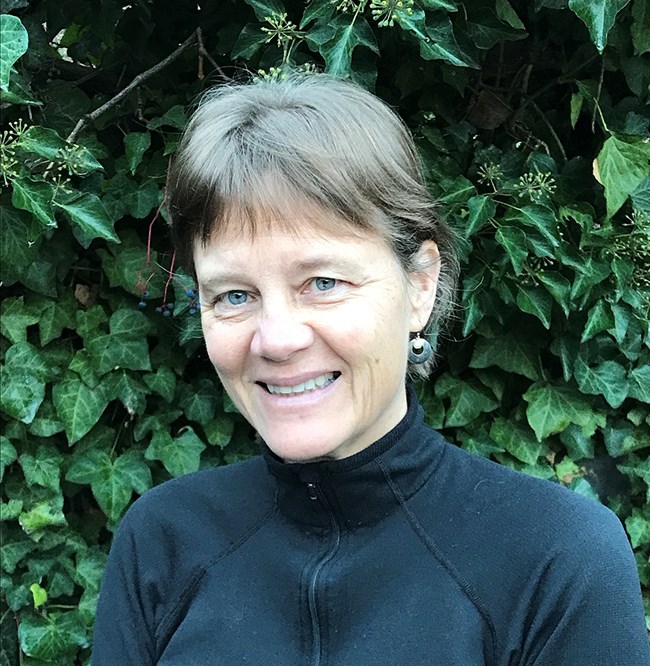
NPS
Sonya Daw Earns STAR Award for GLORIA Web Page
Klamath Network science communication specialist Sonya Daw won a STAR award for leading the design and content of a new web page. The web page describes the international alpine vegetation and soils monitoring program known as GLORIA (Global Observation Research Initiative in Alpine Environments).
Several high elevation national parks in the western US participate in the GLORIA program as part of their natural resource monitoring. The web page describes how the international program works, what kinds of questions the data will help answer, and which parks participate in GLORIA. Daw worked with Rob Daley (Greater Yellowstone Network) and Kirk Sherrill (Rocky Mountain Network) to create an interactive map of sites. NPS.gov previously lacked a central location for this information, and its increased accessibility will be useful for anyone interested in science applied to rapid climate change in alpine environments.
The GLORIA web page lives on the Mountains subject site under What We Do>Ecological Monitoring>Alpine Vegetation.
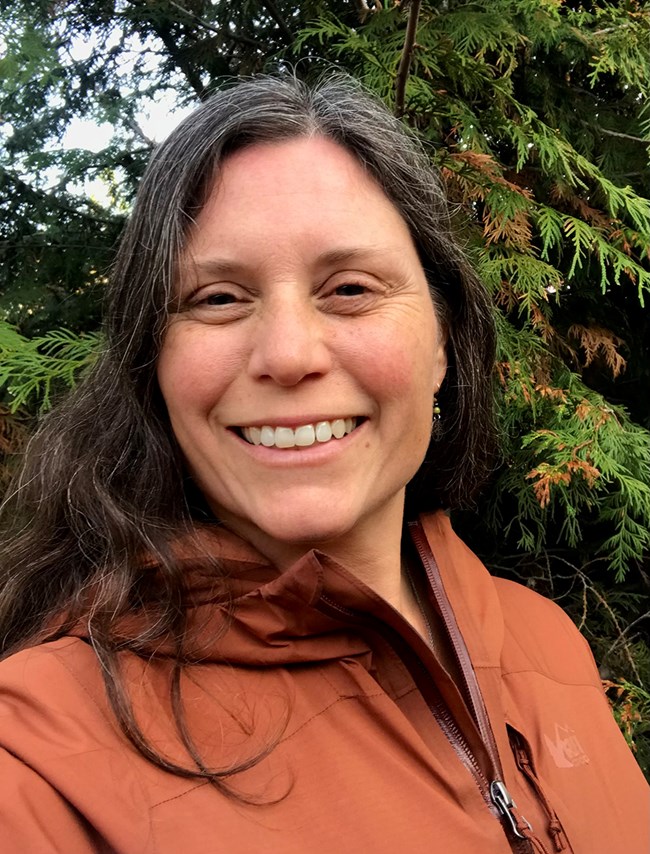
Chenoweth
Welcome to Jennifer Chenoweth
We are happy to welcome Jenn Chenoweth to our team as a part-time SOU collaborator. Chenoweth is the network’s new Assistant Technical Editor and Program Assistant. She’ll be taking on a variety of writing and editing tasks for the Klamath Network, as well as working for at least one other Western IMD network. She’ll also support logistics, fieldwork, data management, and other tasks needed to keep our vital signs monitoring programs up and running smoothly.
Chenoweth recently moved to Ashland, Oregon, with her husband and two daughters, from their long-time home in Port Angeles, Washington. In Port Angeles, Chenoweth worked for Olympic National Park as a Wilderness Planning Specialist as well as an Environmental Protection Assistant. She led an interdisciplinary team in preparing the park’s wilderness plan, and she also worked on NEPA compliance for park projects. She later worked for Clallam County (Port Angeles) as an Environmental Coordinator, managing the County Road Department’s environmental permitting processes. Much of her work involved restoration and mitigation projects associated with fish passage barriers and wetland boundaries.
Chenoweth has an MA in Sustainable Landscape Planning and Design. In addition to her experience managing complex planning documents and regulatory processes, she’s also enjoyed several years of biological fieldwork and environmental education. We’re especially happy that she loves to work in Adobe InDesign!
Outside of work, Chenoweth’s hobbies include growing (and foraging for) food for her family, walking her dog, and hiking and backpacking.

Raynal
Where Are They Now?
The Klamath Network works with a variety of interns to support our program and to offer educational experiences. Interns may find themselves sampling water quality, monitoring whitebark pine, identifying native plants, mist-netting bats, or writing about our science. Here we highlight where our interns have landed professionally or educationally.
Elizabeth Raynal
Klamath Network position: Science Writing Intern, 2018
Current job: Environmental Planner
Ghirardelli Associates, Inc.Roseville, CA
Elizabeth Raynal was the first Klamath Network Science Writing intern when the program launched in 2018. For the internship, she wrote a Feature Creature article on bobcats. She graduated from Southern Oregon University with a BA in English and Outdoor Adventure Leadership and is currently an environmental planner for a heavy civil construction management firm in Roseville, California. At her current job, she authors technical reports and environmental documents and also heads out into the field. She recently assisted with a predatory fish removal and relocation study, collecting and relocating bass and catfish to increase Chinook salmon and steelhead survival rates.
“It’s amazing how often I use my degree. Initially, the connection between English and science seems like a big jump, but I’m challenged every day to apply my degree to environmental projects. I’m reminded often that quality writing is the foundation of quality research. The Klamath Network taught me the art of transforming technical research into engaging content. Who wouldn’t want to learn about bobcats?! I also learned how to research and incorporate digital media into technical reports and ensure Section 508 compliance. These are skills I use every day, and I’m so appreciative that I developed them in a focused, real-world environment. I’m fortunate that I get to incorporate my passion for writing with such interesting work. I never imagined that a red pen and a fishing pole would be in my career toolbox, but, hey, I’m running with it.”
RECENT PUBLICATIONS
Reports
Miner, C. M., J. Burnaford, K. Ammann, B. H. Becker, S. C. Fradkin, S. Ostermann-Kelm, J. R. Smith, S. G. Whitaker, and P. Raimondi. 2021. Latitudinal variation in long-term stability of North American rocky intertidal communities. Journal of Animal Ecology 00: 1-17. https://besjournals.onlinelibrary.wiley.com/doi/full/10.1111/1365-2656.13504 (KLMN/RNSP contributed data).
Science Communication
Featured Creature natural history articles

Newsletter prepared by Sonya Daw
NPS Klamath Inventory & Monitoring Network
Southern Oregon University
1250 Siskiyou Blvd
Ashland, OR 97520
To view past issues of this newsletter, please visit the Klamath Kaleidoscope Newsletter page on our website.
